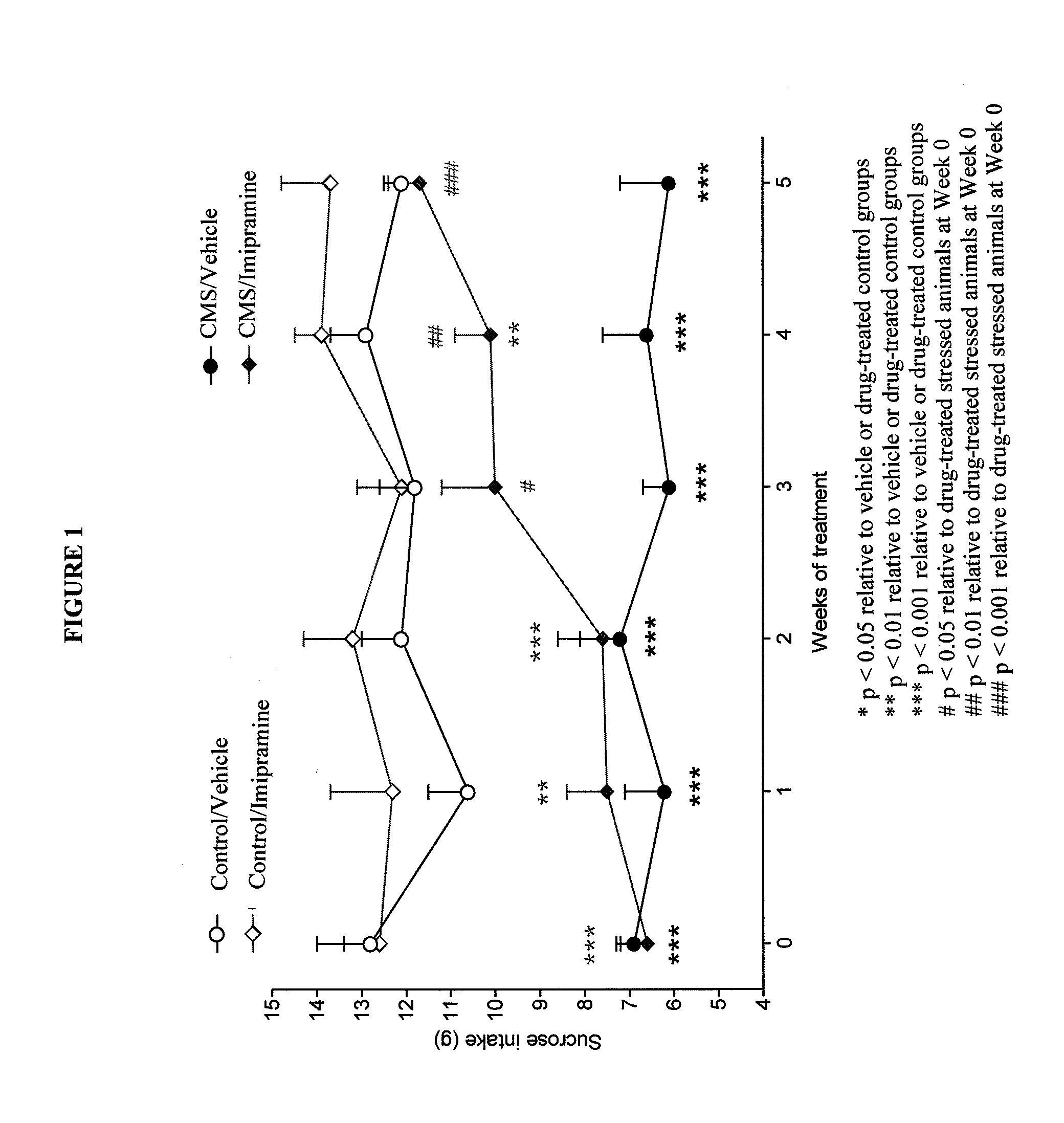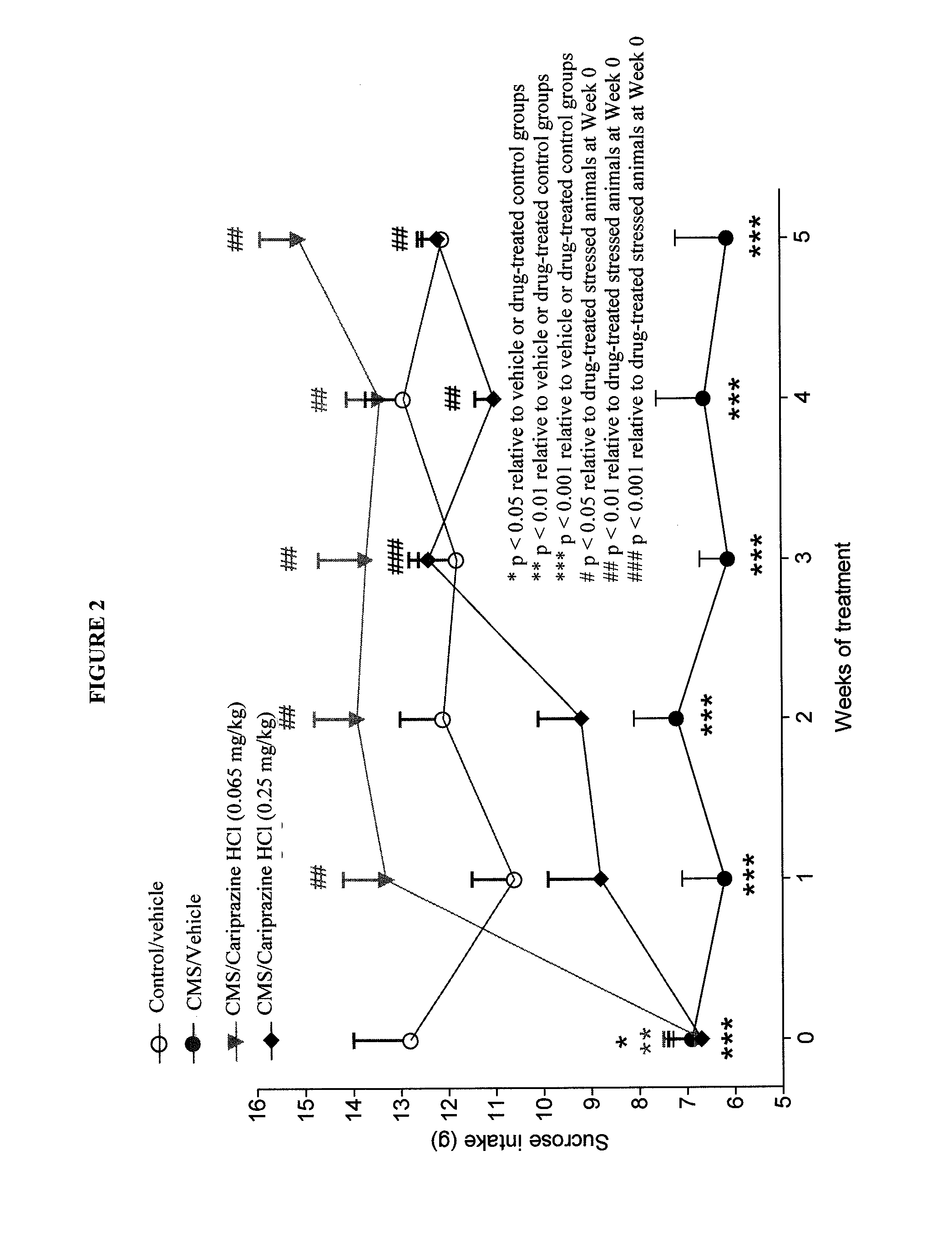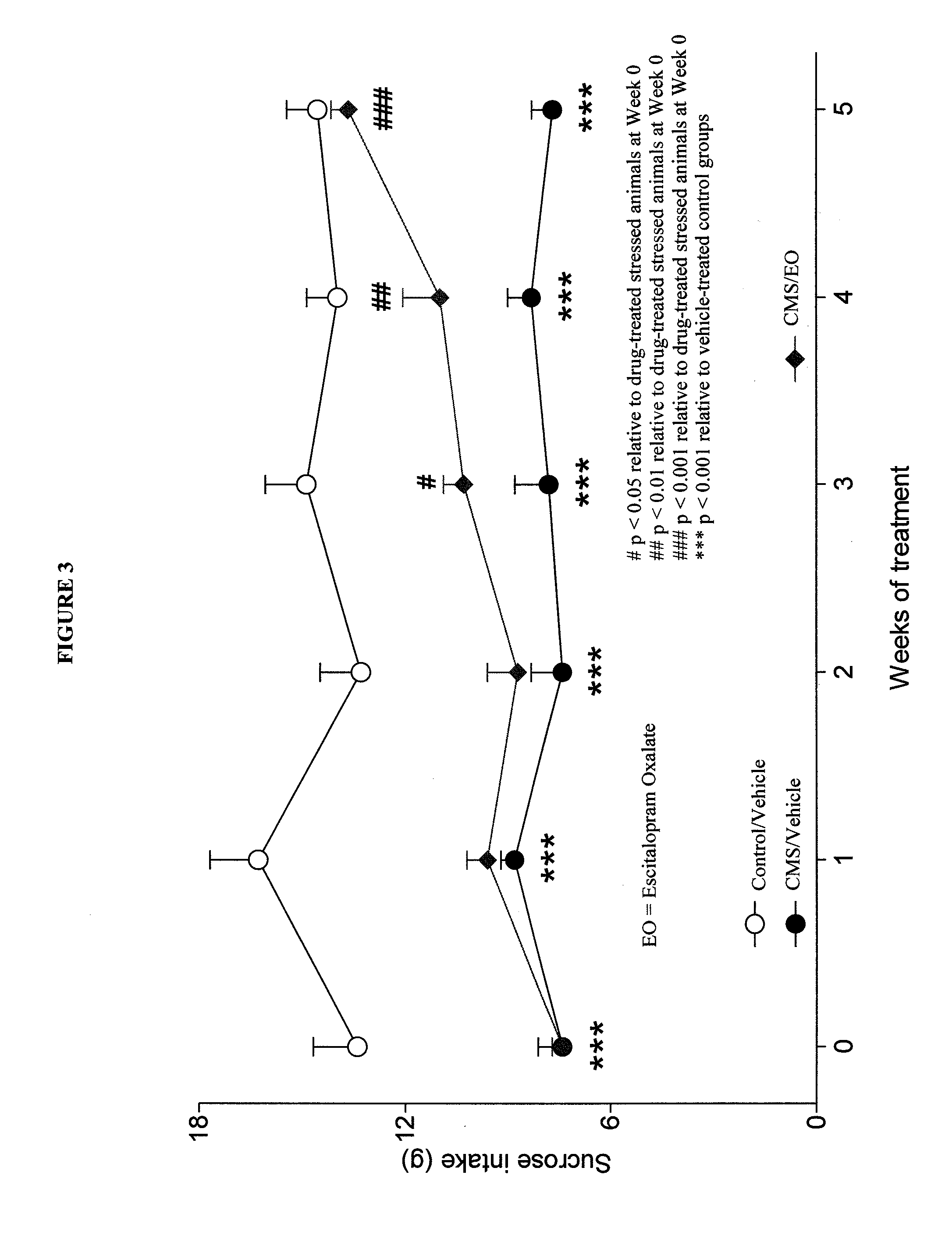Pharmaceutical compositions containing dopamine receptor ligands and methods of treatment using dopamine receptor ligands
a technology of dopamine receptor and composition, which is applied in the direction of medical preparations, nervous disorders, digestive system, etc., can solve the problems of social and occupational dysfunction, high incidence of side effects of drugs, and impairment of function
- Summary
- Abstract
- Description
- Claims
- Application Information
AI Technical Summary
Benefits of technology
Problems solved by technology
Method used
Image
Examples
example 1
Dual-Probe Microdialysis Analysis of Acetylcholine, Dopamine and Serotonin in the Frontal Cortex of Freely-Moving Rats
[0138]A dual-probe microdialysis study was conducted to determine the effects of oral administration of cariprazine hydrochloride, alone and in combination with escitalopram oxalate (administered subcutaneously), on extracellular concentrations of acetylcholine (ACh), dopamine (DA) and serotonin (5-HT) in the frontal cortex of freely-moving rats.
Animals and Environment
[0139]Experiments were carried out in male Sprague Dawley rats (250-350 g body weight; Charles River, UK). Animals were housed in groups of six on a 12 h / 12 h light / dark cycle (lights on at 07.30 h), at an ambient temperature of 21±2° C. and 55±20% humidity. Food and water were available ad libitum. Animals were allowed to acclimatise to these conditions for at least 5 days prior to the study.
Surgery
[0140]Rats were anaesthetised with isoflurane (5% to induce, 2% to maintain) in an O2 / N2O (1 litre / min ea...
example 2
Cariprazine Hydrochloride in a Chronic Mild Stress Model of Depression
[0158]This study evaluated the antidepressant effect of cariprazine hydrochloride in the chronic mild stress (CMS) model of depression. A comparison to the efficacy of the tricyciclic antidepressant compound imipramine was also made.
[0159]Male Wistar rats were adapted to laboratory and housing conditions for 3 weeks, followed by adoption to consumption of 1% sucrose solution for an additional 5 weeks before being separated into control and to-be-stressed groups.
[0160]Chronic stress was applied to the allocated group for seven weeks. The following stressors were used: food and / or water deprivation, cage tilting (45 degrees backwards), intermittent illumination, paired housing, soiled cage (250 mL of tap water in sawdust bedding), stroboscopic illumination (150 flashed per minute), no stress. All stressors were 10-14 hours in duration and were applied individually and continuously, once or twice weekly, during the d...
example 3
Cariprazine Hydrochloride and Escitalopram Oxalate in a Chronic Mild Stress Model of Depression
[0167]Similar to the study described in Example 2, additional studies were undertaken to further evaluate the antidepressant effect of cariprazine hydrochloride, administered alone, or in combination with escitalopram oxalate, in a chronic mild stress model of depression
[0168]In the chronic mild stress (CMS) model, rats subjected to a variety of mild stressors for a prolonged period of time show a substantial decrease in their responsiveness to rewarding stimuli. This deficit is usually monitored by a decrease in the consumption of a 1% sucrose solution, but can also be seen in other tests, such as place preference conditioning or intracranial self-stimulation. The subsensitivity to reward appears to reflect anhedonia (inability to experience pleasure), which is a core symptom of major depressive disorders. Clinically approved antidepressants have shown activity in this animal model by rev...
PUM
| Property | Measurement | Unit |
|---|---|---|
| w/w | aaaaa | aaaaa |
| w/w | aaaaa | aaaaa |
| body weight | aaaaa | aaaaa |
Abstract
Description
Claims
Application Information
 Login to View More
Login to View More - R&D
- Intellectual Property
- Life Sciences
- Materials
- Tech Scout
- Unparalleled Data Quality
- Higher Quality Content
- 60% Fewer Hallucinations
Browse by: Latest US Patents, China's latest patents, Technical Efficacy Thesaurus, Application Domain, Technology Topic, Popular Technical Reports.
© 2025 PatSnap. All rights reserved.Legal|Privacy policy|Modern Slavery Act Transparency Statement|Sitemap|About US| Contact US: help@patsnap.com



